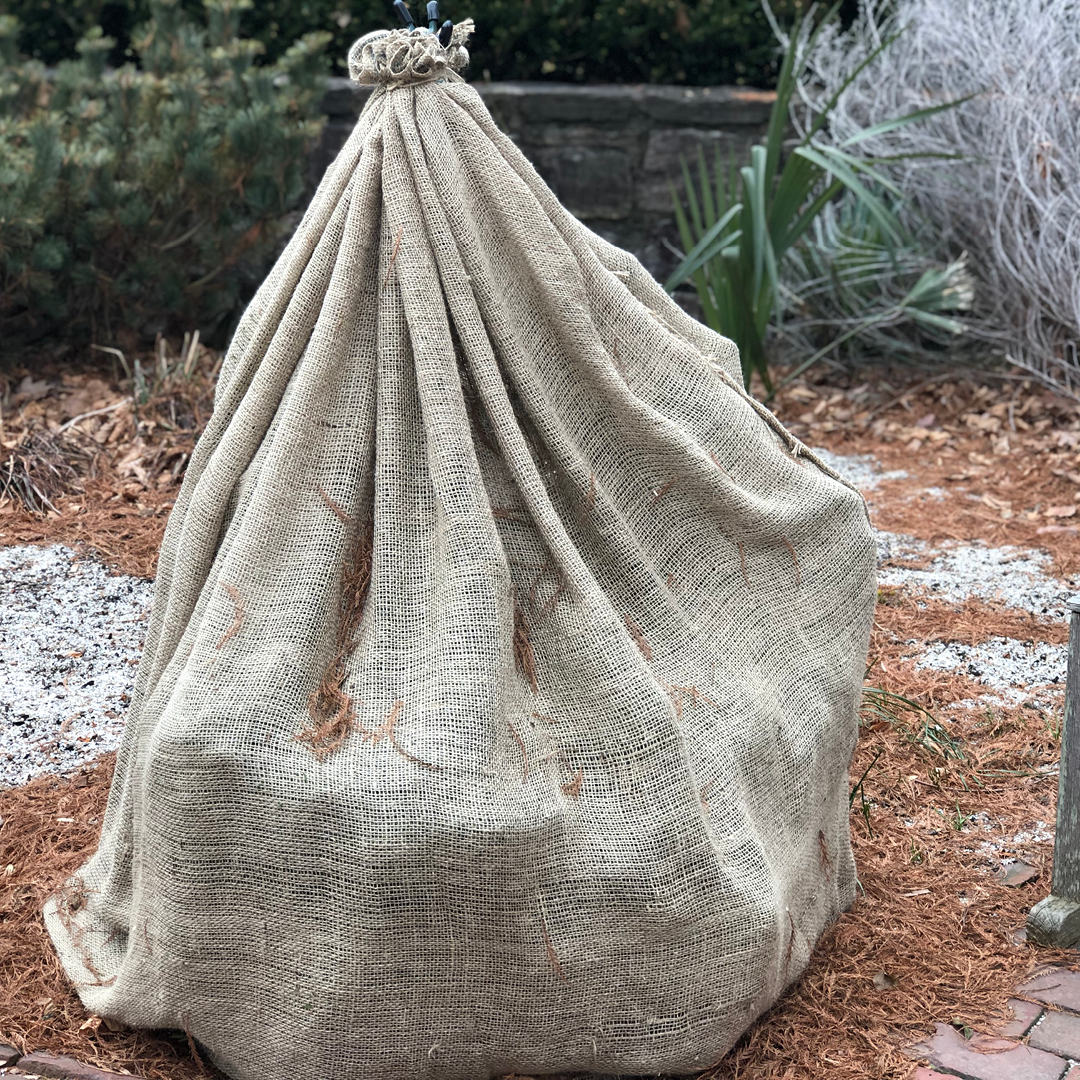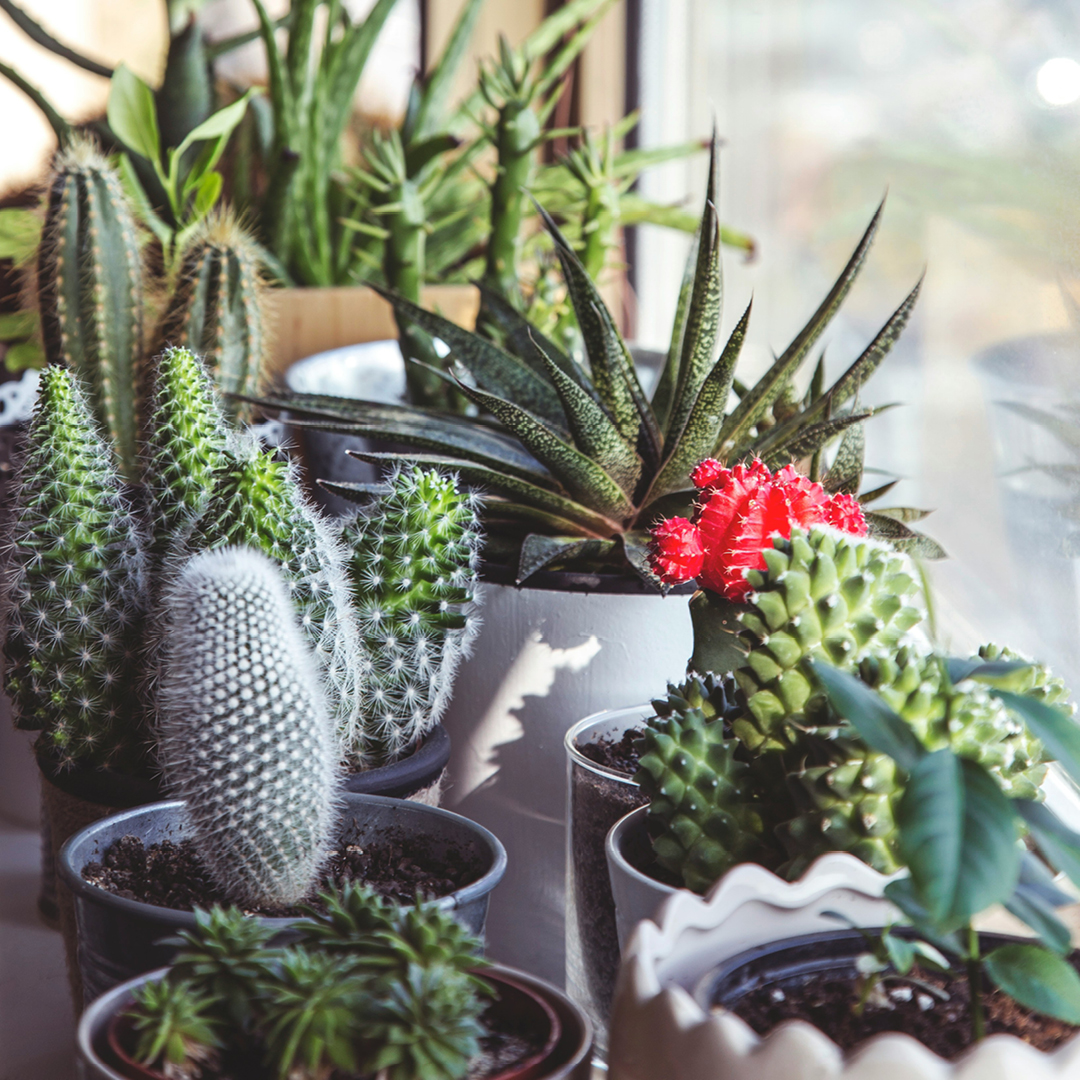Winter temperatures in our area can sometimes get down into the 20’s or teens, enough to damage tender plants. When a frost occurs, water inside some plants will freeze, causing plant cells to burst and resulting in irreparable damage. If frost is in the forecast, or if you are in a low-lying area more susceptible to frost, it is advisable to take measures to protect your valuable plants when temperatures drop. Keep frost protection supplies on hand in a convenient location to protect plants on short notice.
How to Protect
Before attempting to protect your landscape on a frosty night, “know what you grow.” Native plants are adapted to our temperature highs and lows and, generally, do not require protection. With the exception of cactus it is a good idea to make sure plants are watered before a frost because moist soil will stay warmer than dry soil.
Container Plants
- Frost-tender plants that are in containers may be brought indoors until the threat of frost passes.
- Marginally hardy plants may be placed against a south-facing wall where the radiant heat provides additional warmth.
Small Landscape Plants
- Cover single small plants overnight with a cloche, cardboard box, bucket, or flowerpot. Remove covering when temperatures rise above freezing.
Intermediate Landscape Plants
- Intermediate plants, like tender shrubs and vines, can be covered with commercial frost cloths, old bed sheets, or burlap. Create a framework using readily available materials, such as garden hoops, stakes, PVC, ladders, or trellises, to keep the fabric from touching the plants. Make sure the cloth drapes all the way to the ground around the dripline to capture its stored heat and keep it from escaping. Do not leave covers on if daytime temperatures are above freezing.
Large Landscape Plants
- The tips of columnar cacti may be protected with Styrofoam cups during a freeze. This will protect the tender new growth.
- Place incandescent outdoor Christmas lights in the branches of citrus trees. This will help keep limbs warm enough to prevent frost damage. This method does not work if you use LED Christmas lights.
- Wrap trunks of young, tender trees in newspaper, burlap, or Christmas lights until all danger of frost has passed.
Despite all our best efforts, some tender plants may still be injured by an unexpected or heavy frost. It is difficult to immediately determine how extensive the damage is. Do not be too quick to pull plants out or cut them back. The damaged portion of the plant protects the undamaged tissue. Wait until all danger of frost has passed and plant growth has resumed before deciding what to do. Be patient. You may be surprised by how resilient plants can be.


